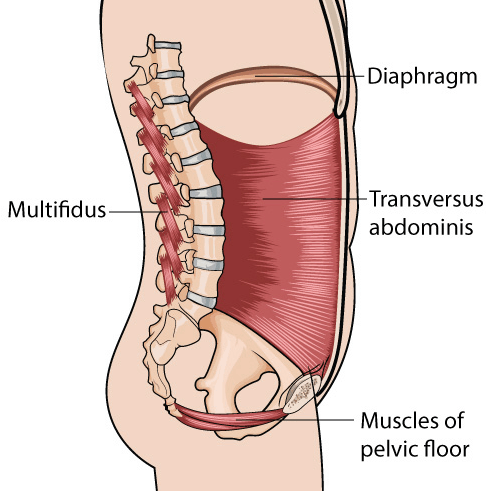
Have you experienced urinary incontinence? Most of us women have been there, whether we’ve had kids or not – you sneeze, and all of a sudden your pants are wet (aka peezing). The next day, you’re laughing so hard at a friend’s joke that you can’t hold it in anymore. Later that week you’re at the gym doing some double-unders, and there it is again. Over the weekend you hit the trails for a run, and on the downhills you can’t stop yourself from leaking.
Everybody’s doing it, so what’s the big deal? Just because leaking is common (up to 45% of women over age 30 have stress urinary incontinence!) doesn’t mean it’s normal. We laugh about it, but it can be pretty embarrassing and have a negative impact on your life. Women who leak have lower quality of life and worse sexual function than those who do not. It’s more than just a little annoyance, and we gotta start addressing it.
Read on to find out:
- Why leaking is an issue
- The muscle team that works to keep you dry
- What you can do to start addressing the issue
Why is leaking an issue?
Leaking is extremely common, though it may not seem that way since we aren’t talking about it. Between 25-45% of women over age 30 experience some type of urinary incontinence. This number includes many women who have not had children, so it’s not just moms experiencing this.
Stress urinary incontinence (SUI) is the most common kind, and happens when things like coughing, sneezing, lifting, running or jumping put pressure on your bladder.
As those of you who have it might know, leaking can impact life in many ways. Women with urinary incontinence have a lower quality of life and experience sexual dysfunction, anxiety and depression more frequently than women who are continent. Because there’s a stigma attached to incontinence, it can be humiliating and cause you to avoid social situations. It can negatively impact relationships, interfering with intimacy and physical affection. In addition, women may take time off work due to incontinence or may be more distracted during work. It’s a barrier to various types of exercise, too – especially those with higher impact, like running or CrossFit. How many of you have just accepted leaking as normal during double-unders?
Clearly, leaking has a profound impact beyond what’s on the surface. Let’s stop ignoring it!
The muscle team that works to keep you dry
Turns out we have a group of muscles that functions to keep things from leaking out! These muscles create pressure to keep things stable. Not only does this group need to be trained, but it needs to learn to work in a coordinated fashion so it’s able to move with us as we go through daily activities and exercise.
The primary muscles that work together to maintain intra-abdominal pressure are the diaphragm, the transverse abdominis, the pelvic floor, and the multifidi. This is often called your ‘core’. To find out more about the core and how it creates a pressure system, check out our post exploring more details about the core muscles.
They form a cylinder shape (think of a pressurized can, like hairspray) to create a pressure system and provide us with stability. If one or more of these aren’t functioning or if the team isn’t coordinated, we put excessive pressure on the pelvic floor when we’re sneezing, lifting, running and jumping. If the pelvic floor can’t cope with that high level of pressure, we leak.
What you can do to start addressing the issue
There are absolutely things you can do to improve your system’s ability to manage pressure. You can start by checking out your posture, or alignment. Slouched posture makes it harder to activate your pelvic floor, so assuming a more upright stance is a good first step.
After that, notice your breathing patterns. Are you breathing only through your shoulders and upper chest? Or are you someone who only breathes through the tummy? Neither of these are optimal for the coordination of your muscle team. Try out a breath cycle where you equally expand your ribs and your belly, noticing how your diaphragm drops as you breathe air in, and rises as you breathe air out. For more practice, check out our post on breathing mechanics.
Lastly, try out this new alignment and focused breathing pattern during a light lift – such as lifting an empty laundry basket from the floor. Exhale as you lift the basket, simultaneously lifting your diaphragm and pelvic floor to provide your body with stability.
Still having trouble?
This can be complicated stuff, especially for those of us who are accustomed to holding our breath while we exercise or lift heavy things. For further guidance and to stop leaking for good, come see one of our experts!
Blog image: https://www.stjhs.org/print/?page=%2Fhealthcallingold-redirect%2F2016%2Ffebruary%2Ftake-cover-from-sneeze-clouds-%2F


